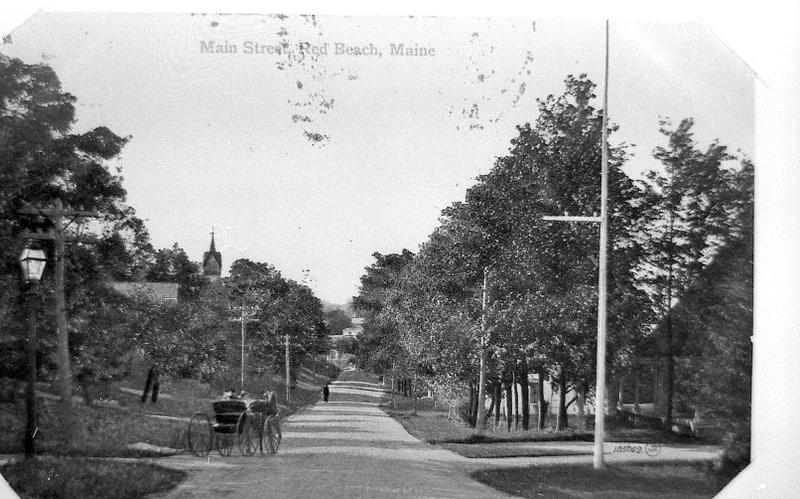
In 1900, Red Beach was a busy and in many ways idyllic New England village. The scene above shows the “Main Street” now Route 1 from the corner of the Shattuck Road looking toward the village. The natural beauty of the St. Croix River on which the village is located was complemented by the many lakes and streams of the hinterland. Beautiful homes fronted on the river along what we now know as St. Croix Drive, and the town was prosperous.

Employment could easily be found in the plaster mill, or …
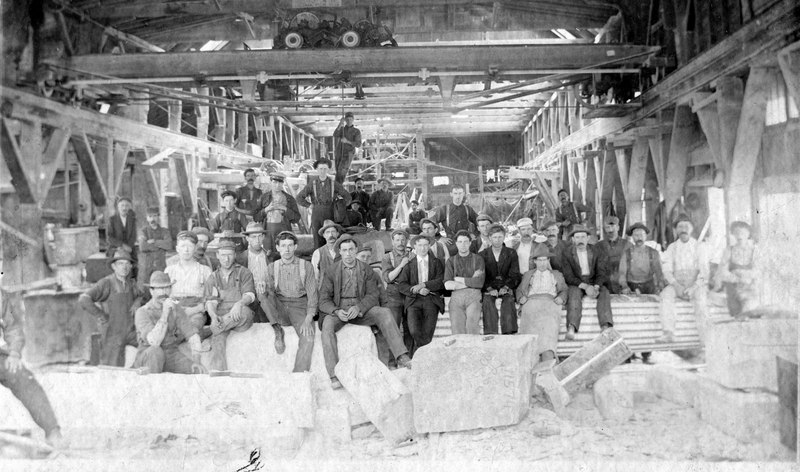
… with the Red Beach Granite Company whose granite was renowned along the east coast for its color and quality. If this sort of work didn’t suit there was always the sea. It is said that fourteen Cooks from Red Beach became sea captains, all highly regarded in maritime circles. One other positive aspect of life in Red Beach was the lack of crime. Red Beach had a reputation as a very peaceful place with a strong sense of community and this made it all the more surprising when the most shocking crime in the history of the St Croix Valley was committed in this little village in early April of 1900.

Newspapers across the country reported the crime, usually with sensational headlines. The Calais Advertiser called it “The Red Beach Horror”
From the Advertiser April 4, 1900:
The tragedy at Red Beach, Thursday morning, is without parallel in this locality. And that it should occur in the most law-abiding sections of the city, where crime of any kind is almost unknown, seemed peculiarly hard of belief.
Thursday forenoon the perpetrator of the unnatural deed was at work in the yard of Mr. Oliver A. Jamieson, finishing a job of splitting wood he had previously sawed. · In his company was his youngest son, Leslie, about four years of age. Leslie and a young son of Mr. Jamieson played together for some time, until the Jamieson boy went “sapping.” When he returned he saw Reynolds going down street towards his home, and Leslie lying on the ground with a cut in his head. Thinking an accident had occurred, young Jamieson (who is a bright little fellow of only eleven years), ran after Reynolds, intending to tell him of Leslie being hurt. As he approached and called to him, Reynolds was in the act of killing the elder son, Earl. Master Jamieson, on seeing this, ran for the store nearby. Reynolds then must have attacked his wife, for a woman’s screams were heard, and Mrs. Reynolds ran out of the door, pursued by her husband, who struck her down in the yard. Reynolds then dragged the bodies in the shed, and went upstairs and set fire to the house, first locking the doors. The neighbors, who hurried to the scene on the alarm being given, burst open the door, carried the bodies out, and rushed up stairs after the murderer. Reynolds jumped from a window and ran toward the beach, but after a short distance was covered went back to the main road, still swinging the bloody axe. A crowd of men followed, and he was finally rounded up on the bridge. Capt. John Coleman, of the schooner Mary Lee Newton, was the first one to reach him, and held him until assistance arrived, when he was bound with ropes and formally put under arrest by Deputy Marshal Robinson.
Leslie, the first victim of the tragedy lived for several hours after being struck, and although he received prompt medical attention from Dr. Wood, and careful nursing, all efforts to save his life failed. The home of the family was destroyed. The flames with great difficulty were confined to the house, but for a time Red Beach, owing to the high wind, was in danger of a serious conflagration.
Friday afternoon the Coroner, F. L., Shaw of Machias, empaneled a jury. After viewing the bodies and taking testimony in the case, the jury returned the verdict that “Eleanor Reynolds, the wife, Earl and Leslie, the two sons, came to their death by blows from an axe in the hands of Fred Reynolds.” Friday afternoon the preliminary examination of the prisoner was held in the Courtroom, Judge Fowler presiding. Reynolds pleaded “not guilty” to the charge of murder. Considerable testimony was taken, and the judge bound the prisoner over for trial at the next session of the S.J. Court. Gen. B. B. Murray appeared for the respondent both at the inquest and examination, and County Attorney Campbell for the State.
Fred Reynolds is upwards of 40 years of£ age, slight in build and about 5 feet, 6 inches in height, not much more than a boy in size, and has always been a quiet, inoffensive man, perhaps of no great energy or industry, but sober, fond of his family, and spending his earnings for their comfort. Mrs. Reynolds, apparently, was the superior of her husband both in intellect and education, and the narrow life she was compelled to lead no doubt may have caused a certain amount of friction in the family, but no serious disagreement had ever occurred so far as known, between the husband and wife. The children according to the testimony of the neighbors, were as comfortably and as neatly clothed as any in the village, and apparently were well fed.
The only explanation of the tragedy is the insanity – it may have been only temporary – of the husband and father. That he realizes his position now is evident, and he expressed regret to Marshal Miller on his way to Machias, Friday night, and stated that he intended to plead guilty, as he preferred a sentence to Thomaston prison to a life in the Insane Asylum; that he recollected nothing of the events of the day of the tragedy and knew nothing until awakening in the jail in this city Friday morning.
Given the brutality and senselessness of the crime one would have expected public outrage to reach a fever pitch, perhaps even demanding a reinstitution of the death penalty and certainly disputing Fred Reynolds claim of insanity especially as the insanity appeared so fleeting. Such was not the case. Public sentiment was best summed up by an article in the Eastport Sentinel:
Fred Reynolds, who committed the fearful deed at Red Beach on last Thursday causing the death of wife and two bright, little children, is more to be pitied than condemned. Without doubt the act was the prompting of a disordered brain, the man always being looked upon as being somewhat weak mentally; while not considered of unsound mind, yet he had not been endowed by nature with sufficient mental stamina to enable him to throw off the hallucinations that follow periods of gloom and despondency, brought on and nurtured by poverty and adverse circumstances. The man was employed in this city last season by E. M. Cherry, who found him a willing and faithful worker.
The Sentinel, in a longer report on the crime, which circulated throughout the country over the Associated Press wire provided some additional details about the family and the murders:
Sentinel April 4, 1900:
The Red Beach Tragedy
The following is a portion of the associated press account or the fearful tragedy that was committed at Red Beach last Thursday:
A horrible crime, due, it is thought, to insanity, was committed by Fred Reynolds at Red Beach Thursday forenoon, Mrs. Reynolds and one son having been killed with an axe, another son so seriously injured that he died the same afternoon, and the house burned to the ground. After completing these actions Reynolds ran up the street flourishing the bloody axe, but he did not harm anyone else. The man finally was taken into custody, offering no resistance, and he was taken to Calais for safe keeping.
Reynolds had been employed lately in chopping wood and in doing odd jobs of any kind that would bring him in a little money. Little is known of his former life except that at one time he lived in Pembroke. Several years ago he married a Miss Bearman, an English girl, who had not been very long in America. The family moved to Red Beach about three months ago. They lived in a secluded place and they were known to be very poor. The family consisted of Reynolds and his wife and two sons, one between six and seven years of age and the other about three years old. The poverty of the family had become known to the townspeople and a few days ago substantial assistance contributed by the citizens placed them above immediate want.
According to the account received, Reynolds appeared as usual during the early hours of the forenoon. About ten o’clock, however, he entered the house and with an axe assaulted his wife. She was almost instantly killed, the elder son was treated in a similar manner, being killed outright. The three year old boy apparently was an intended victim of the father and although he was seriously cut, he survived the attack a short time.
After committing these deeds Reynolds set fire to the house and it was burned to the ground. As the flames swept through the small structure, Reynolds rushed up the street of the village still carrying the axe, dripping with blood. The axe finally was taken away without his making any resistance. Owing to their lack of facilities at Red Beach for caring for a prisoner of the apparent desperate nature of Reynolds, it was decided to take him to Calais.
After Reynolds was arrested he was placed in heavy manacles and brought to Calais by train. On the way he appeared very quiet but took little notice of what was passing or of the occupants of the car. He was quiet and tractable until Calais was reached and he was placed in an express wagon at the railroad station under guard of two of the local police. His ravings commenced again and in spite of his bonds he caused the two men considerable trouble and attracted a very large crowd, which followed the wagon along the streets.
Reynolds at this time was a raving maniac, crying out in a loud voice, but his language was utterly unintelligible to anyone. In spite of the handicap which his manacles were to him the carriage had to be driven with great care and the two guardsmen were taxed to their utmost to ward off the attempts of the insane man to thrust them away from him. He was finally taken to the police station and placed in a cell, still manacled for fear he might do some injury to himself. It is not known that he ever drank liquor while at Red Beach and he was known as a very quiet, inoffensive man. He was about 42 years of age and his wife was 37. The county attorney at Cherryfield was also notified and took charge of the case as far as any criminal proceedings are necessary. Reynolds was given a hearing in the municipal court before Judge Fowler, Friday afternoon, appeared to realize after a fashion the enormity of the crime with which he was charged. He was taken to Machias jail, Friday evening. Shortly before leaving the lockup for the court room, Reynolds, who asked repeatedly why he was detained in custody, was told of his crime by Gen. Murray, his council. He went into violent hysterics, which lasted for several minutes, but afterwards became calm and all through the hearing made no sign as though the matter was of interest to him, except when the killing of his children was described by witnesses, when he bowed his head and cried quietly.
After the initial press coverage little of note was reported in the local papers until May 2, 1900, about a month after the murders when Reynolds appeared before the Superior Court in Machias. An article in the Calais Advertiser sums up the disposition of the case in one paragraph:
The Reynolds murder trial occupied the court yesterday. Little trouble was experienced in selecting a jury. The prisoner appeared perfectly rational, and at times seemed much affected. A plea of not guilty was entered for the prisoner and his counsel, Gen. Murray, offered the plea of insanity. County Attorney Campbell opened for the State, and, after a review of the case, called the witnesses for the prosecution. The testimony was in the main the same as that taken in the preliminary examination. Gen. Murray, for the defense, claimed that the act was that of an insane man, and the medical testimony bore him out in his contention. The case was given to the jury late in the afternoon, and, after a half hour’s deliberation, they returned a verdict of not guilty by reason of insanity. The prisoner has not yet been sentenced.
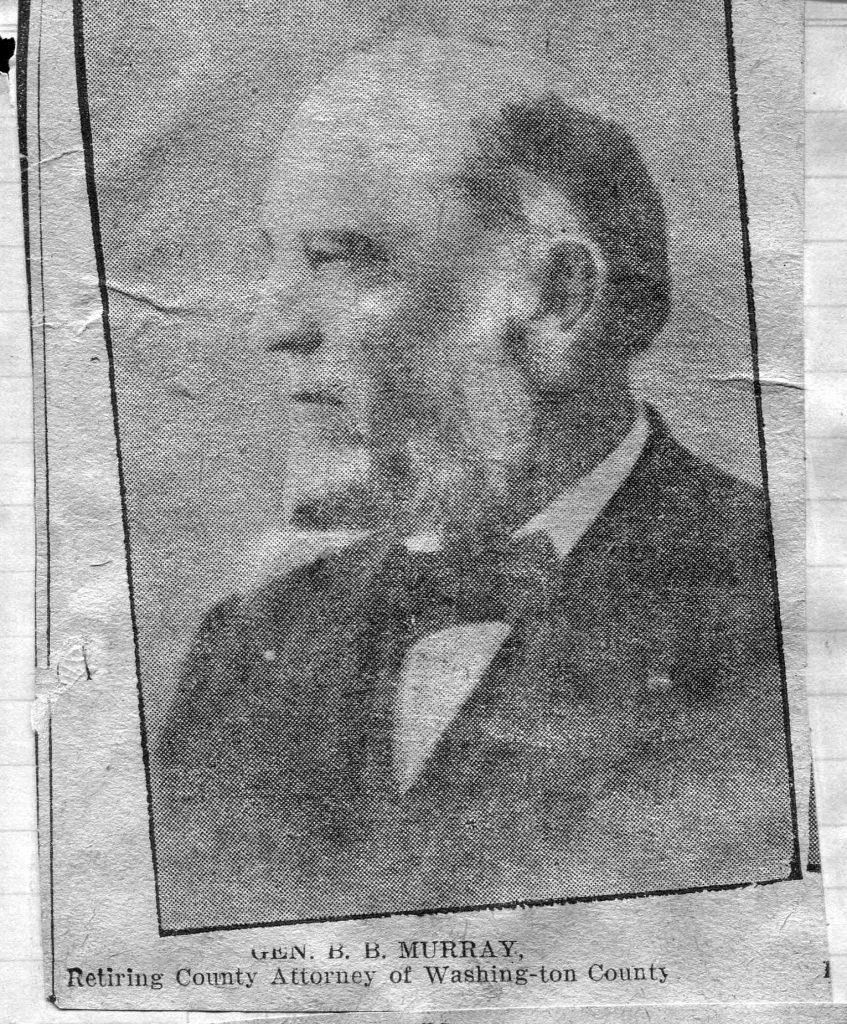
An acquittal after jury deliberations of but half an hour in a triple homicide must certainly be a record which still stands in the State of Maine. The defendant was ably defended by Civil War General Benjamin Murray, an attorney from Pembroke who spent much of his later life in Calais.
General Murray was highly regarded in Calais, having fought in nearly every theater of war during the Rebellion. During one perilous period Murray’s troops were ordered to Washington to protect the city from the depredations of the Confederate raider General Jubal Early. Abraham Lincoln reviewed Murray’s troops as they marched by the White House. He was highly regarded in legal circles and died in Calais in 1906.
However, not much brilliant lawyering was called for in the Reynolds case as it appears the disposition of the case had been predetermined. Reynolds’s insanity defense was apparently not seriously challenged by the state.
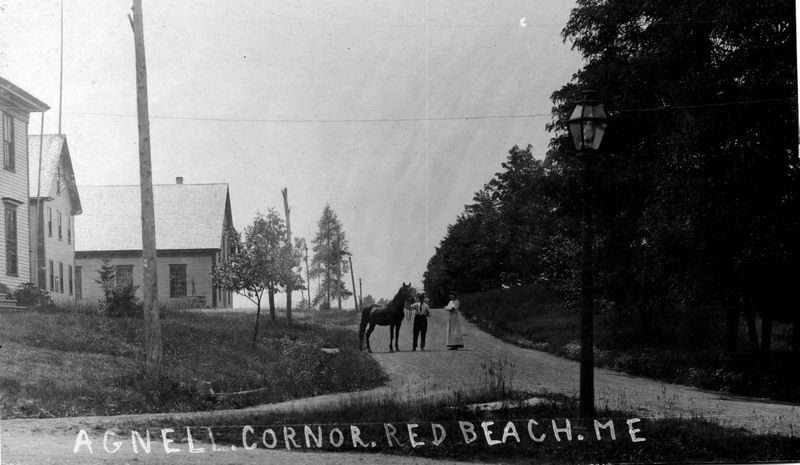
As to the scene of the crime, it occurred on the Shattuck Road not far from what was then known as Agnew’s Corner which marked the intersection of the Shattuck Road with the county road, now Route 1. We know from the 1901 Calais directory that Oliver Jamieson, a bookkeeper at the Plaster Mill, lived on the Shattuck Road with his wife Nellie near Agnew’s Corner. It was at Jamieson’s place that the youngest boy was killed and Reynolds axe wielding rampage after the murders took him into the village just down the hill…
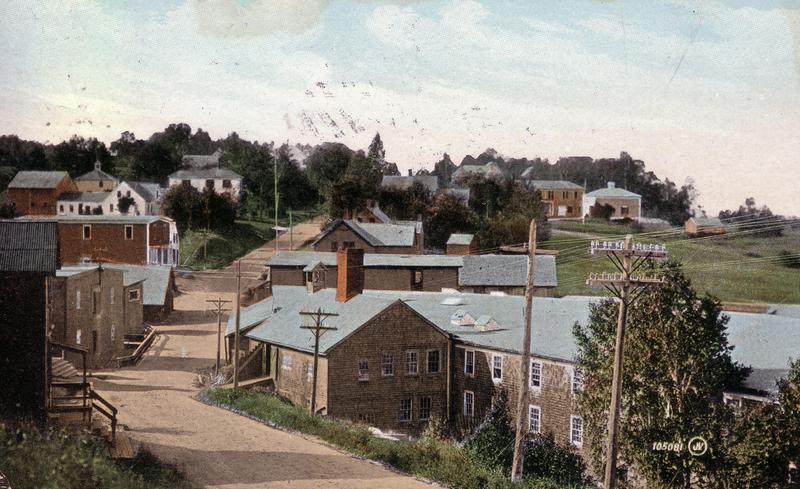
… where he was finally subdued by Captain Coleman, a master mariner from Calais who lived on the River Road across from Steamboat Street, possibly in the house adjacent to Tupper’s Cabins.

While we cannot definitely verify the final outcome of the trial (the article from May 2, 1900 simply says the prisoner has not yet been sentenced), we presume Reynolds was confined to what was then called the Maine Insane Hospital in Augusta. He does present a difficult case given that the authorities agreed he was legally insane at the time of the murders but had quickly recovered his sanity, appearing normal within 24 hours of the crime. It would be interesting to determine whether Reynolds was confined indefinitely to the “Insane Hospital” or released at some point.
The study of mental illness was in its infancy of the time and the defense of insanity in criminal proceedings has undergone dramatic changes since 1900, but even today the case would present a legal and psychiatric conundrum. While Reynold’s insanity was said at the time to be “temporary”, no inquiry was made into the cause or trigger for his murderous rampage which begs the question of whether Reynolds, who all agreed had regained his sanity, would always be a danger to society. We’ll leave that question for others to answer and if any researcher can determine Reynolds’ fate after the trial May 2nd, we’d be most interested.
